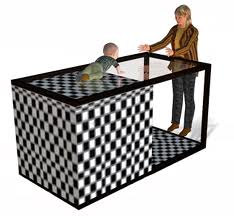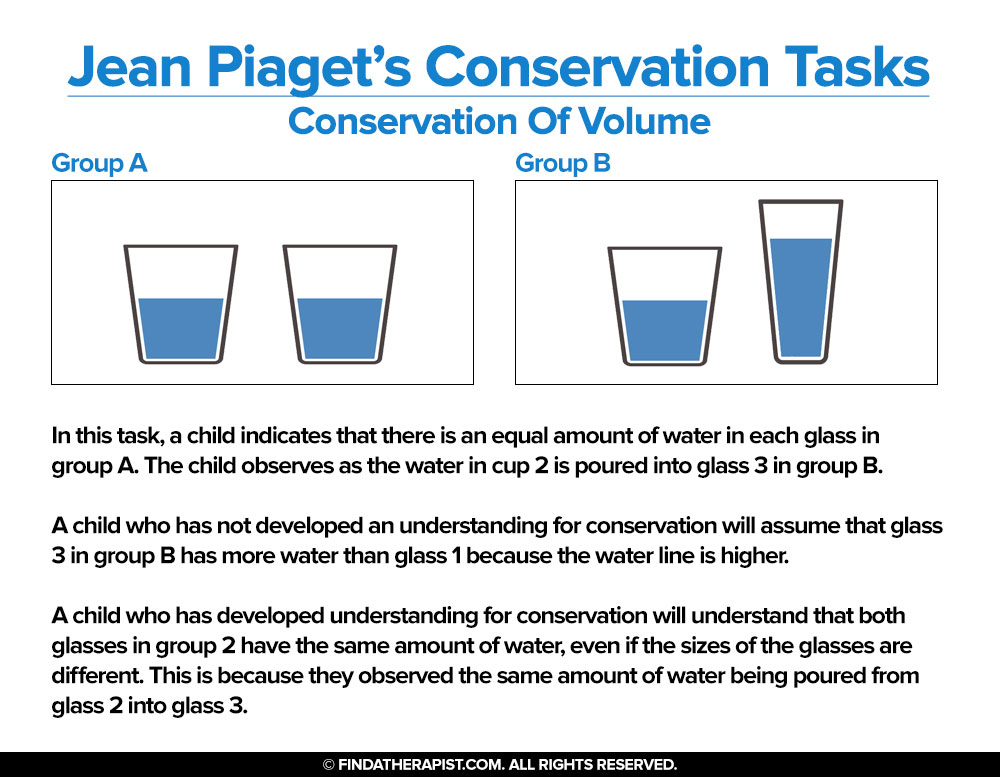AP Psychology Unit 4 (Development)
1/83
Earn XP
Description and Tags
Mrs. Weck 2025-2026
Name | Mastery | Learn | Test | Matching | Spaced |
|---|
No study sessions yet.
84 Terms
Stability & Change
How & why people remain the same in some ways (stability), but also evolve throughout life (change)
Nature & Nurture
Genes (nature) & life experiences (nurture) shape a person’s development
Continuous & Stages
Developmental changes that are slow & steady where each step builds upon the previous one
Cross-Sectional Research
Studying different groups of people of various ages at the same time
Longitudinal Research
Studying the same individuals over time to measure how they develop throughout their lives
Teratogens
Harmful substances that can cause birth or developmental defects to an unborn fetus
Reflexes
Automatic responses newborn babies are born with that aid in survival
Rooting Reflex
When a newborn’s cheek is touched, they’ll turn their head towards that side in an attempt to breastfeed
Visual Cliff
An experiment designed to study depth perception in infants

Critical Periods
A time frame in early childhood when the brain is most receptive to language-learning
Sensitive Periods
Times in early development when the brain is most receptive to learning
Growth Spurt
A rapid increase in height & weight
Puberty
When a person becomes sexually mature
Primary Sex Characteristics
Organs & structures directly involved in reproduction
Secondary Sex Characteristics
Organs & structures that develop during puberty, but aren’t involved in reproduction
Menarche
A girl’s first menstrual cycle signaling the beginning of puberty & the ability to reproduce
Spermarche
A boy’s first production of sperm signaling the beginning of puberty & the ability to reproduce
Menopause
The end of a woman’s menstrual cycle
Jean Piaget
A famous psychologist who studied children’s cognitive development
Sensorimotor Stage (Piaget)
1st stage of Piaget’s theory of cognitive development (birth-age 2)
Infants learn about the world through sensory experiences & motor actions
Preoperational Stage
2nd stage of Piaget’s theory of cognitive development (ages 2-7)
Children develop language, thinking & imagination but struggle with logical reasoning & understanding other perspectives
Concrete Operational Stage
3rd stage of Piaget’s theory of cognitive development (ages 7-11)
Children develop logical thinking about concrete objects, but struggle to understand abstract ideas.
Formal Operational Stage
Final stage of Piaget’s theory of cognitive development (ages 12-death)
People develop the ability to think abstractly
Object Permanence
The understanding that objects continue to exist even when they can’t be perceived by the senses
Conservation
Understanding that properties of objects (weight, volume) remain constant despite changes in appearance

Reversibility
The understanding that objects can return to their original states
a shirt can be folded and returned to its original shape by unfolding it
Animism
The belief that nonliving objects have feeling, thoughts & emotions.
Egocentrism
When children struggle to see things from another person’s point of view.
Theory of Mind
The ability to understand that other people have their own thoughts, feelings & perspectives different from your own.
Lev Vygotsky
A famous psychologist who theorized that social interaction plays a role in cognitive development
Scaffolding (Vygotsky)
A teaching method where a teacher gives support to help a learner master a task, then gradually removes help as the learner becomes more skilled
A teacher helps a student sound out words then slowly lets the student begin to read alone
Zone of Proximal Development
The range between what a learner can do independently vs what they can achieve with guidance
a basketball player struggles with 3-pointers alone, but after receiving training from a coach, she significantly improves
Crystallized Intelligence
Knowledge and skills accumulated over time
Fluid Intelligence
The ability to think quickly & solve problems without relying on prior knowledge
Dementia
A decline in cognitive functions (memory, thinking, reasoning)
Phonemes
The smallest units of sound within a word that can change its meaning
present vs present (show something to a group of people vs a gift)
Morphemes
The smallest units of meaning in a language that add meaning to a word
prefixes, suffixes, etc.
Semantics
How words & sentences convey meaning in a language
I never said I killed him
I never said I killed him
I never said I killed him
I never said I killed him
I never said I killed him
I never said I killed him
Grammar
Rules that determine how words are combined to create sentences and convey meaning.
Syntax
The rules for how words are ordered to form sentences.
Nonverbal Gestures
Movements or body signals that communicate meaning without words
Cooing
An early stage of language development when babies make vowel-like sounds
ooh, aah
Babbling
A stage in language development when babies make repeated consonant-vowel sounds
mama, dada, baba
One-Word Stage
When infants speak single words to communicate whole sentences/ideas
A 1-year old says “bottle” and a babysitter knows he wishes to be fed milk
Telegraphic Speech
A type of speech that involves using short, concise phrases that leave out any unnecessary words
Overgeneralization of Language Rules
When children apply grammar rules too broadly
“gooses” instead of “geese”
Ecological Systems Theory (EST)
A child’s development is influenced by multiple types of environmental systems
Microsystem (EST)
A how person’s immediate surroundings affect their development
family, friends, school
Mesosystem (EST)
The relationships between microsystem elements that affect a child’s development
How parental involvement (microsystem) affects a child’s academic success (also microsystem)
Exosystem (EST)
How the broader community indirectly affects a child’s development
Loose gun law policies cause a child to feel less safe and harms their mental well-being
Macrosystem (EST)
How cultural norms, economic conditions, & societal beliefs affect a child’s development
Chronosystem
Major life transitions or historical events that affect a child’s long-term development
Moving to a new country
the pandemic
Authoritarian Parenting
A strict parenting style where parents enforce high expectations & rigid rules
Authoritative Parenting
A parenting style where parents combine high expectations with support
Permissive Parenting
A parenting style where parents have few rules & low expectations/boundaries, but do show support
Secure Attachment
Children feel confident & trust that their caregivers will provide their needs (due to good parents)
Avoidant Attachment
Children are independent & avoid seeking comfort/reliance from their caregivers (due to neglectful parents)
Anxious Attachment
Children are overly clingy & anxious about separation from their caregivers (due to inconsistent parenting)
Disorganized Attachment
Children show inconsistent/confused behaviors towards a caregiver (due to trauma/abusive parents)
Temperament
A person’s innate way of responding to their environment
Separation Anxiety
A distress response experienced by infants & young children when separated from their caregivers
Parallel Play
When children play alongside each other without directly interacting
Pretend Play
When children act out roles or scenarios using their imaginations
Imaginary Audience
When teenagers believe that others are constantly watching & judging them, even when they’re not.
Emerging Adulthood
The stage of life (late teens-mid 20s) marked by uncertainty & self-discovery
Stage Theory of Psychological Development (Erikson)
People go through 8 stages across life, each with a social conflict that shapes personality & growth
Trust vs Mistrust (Erikson)
Infants learn whether or not they can trust the world to meet their needs (Stage 1; ages 0-1)
Success: a baby learns to trust caregivers who feed him
Failure: a baby learns that the world will not care for him after being neglected (mistrust)
Autonomy vs Shame & Doubt (Erikson)
Children develop a sense of independence by learning to do things themselves through positive/negative reinforcement. (Stage 2; ages 1-3)
Success: a toddler dresses herself & receives praise
Failure: a toddler gets scolded for buttoning his shirt wrong
Initiative vs Guilt (Erikson)
Children begin to lead & plan activities. Encouragement leads to initiative criticism leads to guilt (Stage 3; ages 3-6)
Success: a child feels confident after leading a game (initiative)
Failure: a child is criticized for being “bossy” after leading a game and feels ashamed (guilt)
Industry vs Inferiority (Erikson)
Children focus on mastering skills & completing tasks through positive/negative reinforcement (Stage 4; ages 6-12)
Success: a child is praised for good grades (builds industry)
A child is criticized for failing a test & feels incapable (inferiority)
Identity vs Role Confusion (Erikson)
Teenagers explore interests, values, & beliefs to form an identity (Stage 5; ages 12-18)
Success: a teenager explores many hobbies until finding his love for skateboarding (identity)
Failure: a teenager does not experiment with anything and feels uncertain of herself (role confusion)
Intimacy vs Isolation (Erikson)
Adults seek deep, meaningful relationships (Stage 6; ages 18-40)
Success: A woman builds a trusting, romantic relationship (gains intimacy)
Failure: Another woman struggles with social anxiety & forming relationships causing her to feel lonely (isolation)
Generativity vs Stagnation (Erikson)
Adults strive to guide the next generation (Stage 7; ages 40-60)
Success: A man mentors his younger coworkers & gains fulfilment (generativity)
Failure: An woman who focused solely on personal gain and feels empty (stagnation)
Integrity vs Despair (Erikson)
Adults reflect upon their life’s events (Stage 8; ages 60+)
Success: A grandfather feels proud of his life’s accomplishments (integrity)
Failure: Tom dwells on his past mistakes, making him feel regretful (despair)
Adverse Childhood Experiences (ACEs)
Traumatic events before age 18 (abuse, neglect, etc.) that can have long-term impacts on a person’s health & well-being
Identity Diffusion
A stage in which a person has not yet explored or committed to any goals, beliefs, values, or life paths.
Identity Moratorium
A stage in which a person is currently exploring different goals, beliefs, values, & life paths.
Identity Foreclosure
A stage where people commit to goals, beliefs, values, & life paths without exploring alternatives.
Identity Achievement
A stage in which a person has already explored different goals, values, beliefs, & life paths before coming to a conclusion and gaining a sense of self (identity)
Racial/Ethnic Identity
The race/ethnicity people feel like they most align with
Sexual Orientation
A person’s sexual & emotional attraction to another person
Religious Identity
The religion a person follows/identifies with
Occupational Identity
How a person views themself in terms of jobs/professions
Familial Identity
How a person views themself within their family (roles, responsibilities, values) and the sense of belonging developed from it.